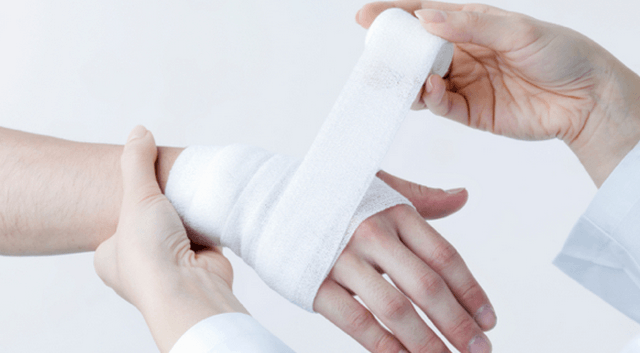There are many types of burns. In most cases burns are painful but relatively minor injuries that can be treated at home. It is important to understand how different types of burns should be treated and also be able to differentiate between a mild burn requiring home treatment and one that requires professional medical attention.
Heat Burns
Heat burns, also known as thermal burns, are the most common burns to children. They can be caused by steam, hot food or liquid, and fire. If the burn appears to be first degree (affecting the top layer of skin), immediately cool the burn under cool water. Do not use overly cold water. Then, it is important to keep the burned area clean and protected with a sterile bandage. Do not apply any ointments, as these can lead to increased pain or infection. Over-the-counter pain medication, such as ibuprofin, is a good idea.
Friction Burns
Friction burns occur when the skin rubs against something. Typically they involve both a scrape and a thermal burn. Friction burns can be as mild as scraping a knee across carpeting or as severe as “road rash” suffered by drivers involved in car or motorcycle accidents. If your accident was the result of someone else’s negligence, you may want to consider contacting a San Luis Obispo personal injury lawyer or one in your area to help you get compensation to cover your medical bills.
Friction burns are very painful to the touch. The most important things to consider when treating them is pain relief and cleanliness. When a friction burn occurs, run the affected area under cool, not cold, water. This helps relieve pain and also aids in flushing the area of any foreign matter that may have gotten in. Some people find aloe to be extremely soothing to friction burns when placed on underneath a sterile bandage.
Chemical Burns
Burns caused by household or industrial strength chemicals (in gas, liquid, or solid form) are known as chemical burns. In most instances, you will be immediately aware of a burn, but in some cases involving milder chemicals, you may not notice right away. As with other types of burns, if you know you have, or suspect you have, a chemical burn, rinse the area immediately with cool water to remove any residual chemical.
Remove clothing or jewelry that may contain the irritant. It is a good idea to wear gloves if you are dealing with a chemical burn. This helps keep the burned area clean and also protects against further exposure to the chemical. Apply a clean bandage and consider getting a tetanus shot. Even mild burns may result in tetanus.
Most burns are relatively easy to treat at home, but be aware that burns can be very serious. Always consider the severity of the burn, the location of the burn, the size of the burned area, and the age of the burn victim when deciding whether or not medical attention is needed.


